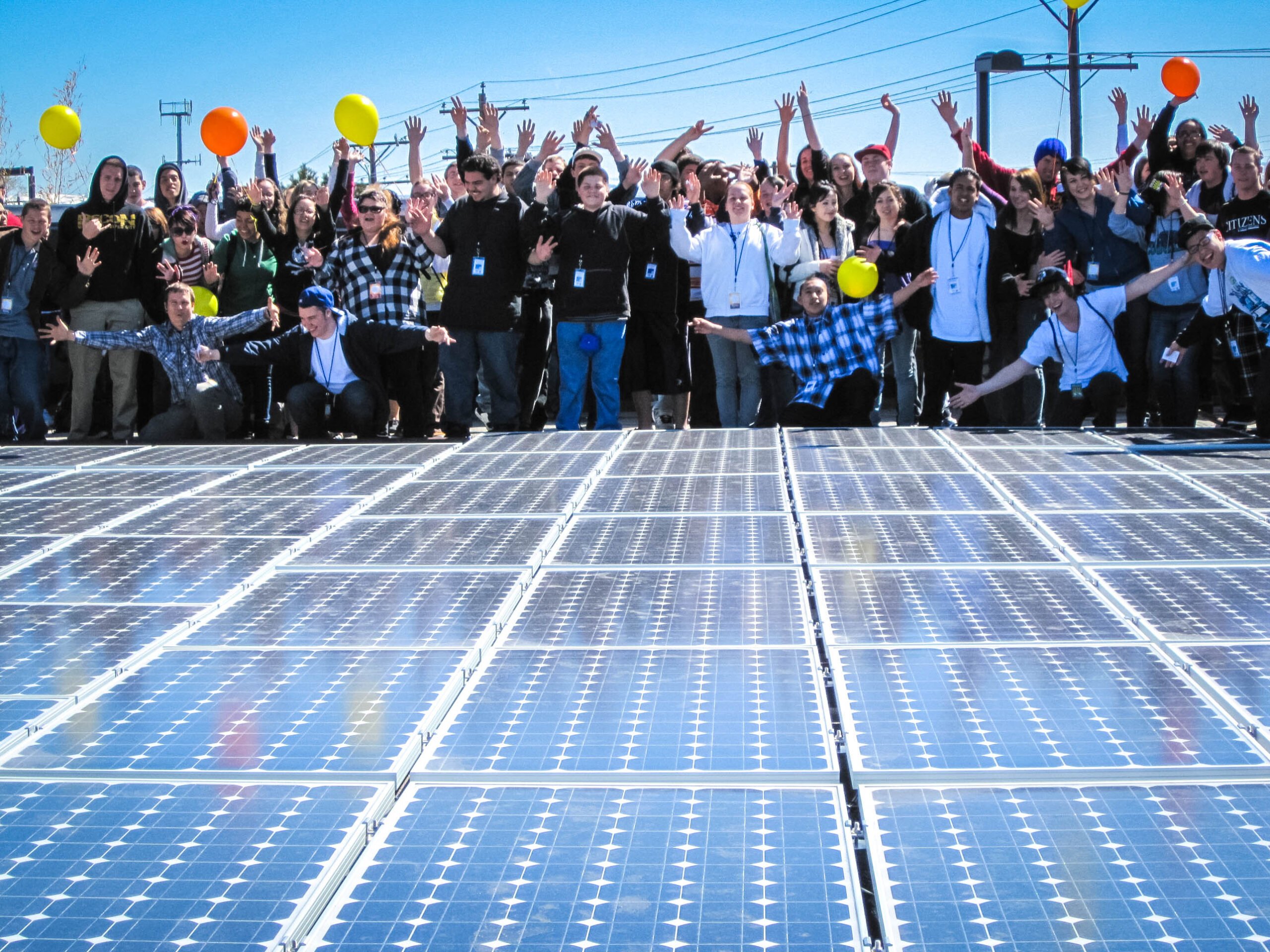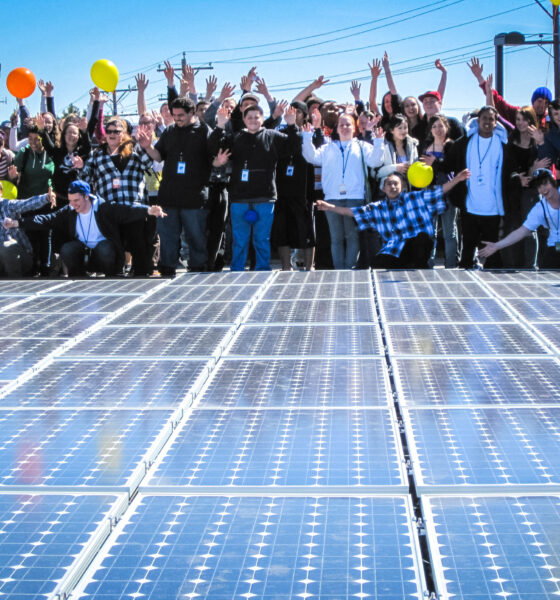

Features
How important is the Co-op Bank’s withdrawal from renewable energy investment?
This week the Co-operative Bank revealed it is halting new investment in renewable energy, removing one of the main sources of funding for independent and community projects. But by harnessing innovative new sources of finance, we can fill this funding gap.
Back in 2007, before the US sub-prime mortgage crisis triggered a global credit crunch and recession, the Co-op announced its intention to invest £1 billion in UK energy efficiency and renewable projects by 2013.
And by all accounts, a huge amount has been achieved over this period. The Co-operative Group’s website says that since 2007 it has committed over £800m to renewable energy, with a focus on small and medium-scale independent initiatives. These are not inconsequential sums, and have helped finance some of the UK’s best co-operative projects, like the recently completed community wind farm at Loch Carnan in the Western Isles.
However financial difficulties at the bank now mean the £1 billion target is unlikely to be met. On Monday, the Times reported that whilst all existing commitments will be honoured, no further corporate lending will take place until further notice. Instead, the bank will focus its efforts on retail customers and small businesses.
In the end then, the financial crisis caught up with the Co-op. The bad loans inherited from its buy-out of Britannia building society in 2009 have been compounded by new capital requirements designed to strengthen the banking sector. As a result, the Co-op bank recently admitted to a £1.5 billion capital shortfall that will be met through a ‘bail in’ of the bank’s investors alongside the sale of other assets held by the wider Co-op Group. In this context, further lending to renewables or anything else has become hard to justify.
But what’s in the best short-term interest of the Co-op is not in the long-term interest of renewable energy development in the UK. Earlier this year, energy secretary Ed Davey said he wants to see “a community energy revolution” in the UK, and energy minister Greg Barker described his vision of the ‘big six’ becoming the “big sixty thousand”. Delivering these objectives will be all the harder without Co-op investment on the scene.
How important is the Co-op Bank’s withdrawal?
To understand the significance of the Co-op’s move, it’s worth looking at a few key numbers.
The government estimates £75 billion is needed over the next 10 years to meet our renewable energy targets (and a further £35 billion is needed to upgrade our electricity transmission and distribution network). Whilst much of this will come from utilities and institutional investors funding large-scale offshore wind farms, much will also need to come from lending to small and medium-size projects.
Decent estimates of just how much this might be are hard to come by, in part because small and medium-sized projects come in many different forms and structures, from household solar PV systems to community wind turbines, farm-owned anaerobic digestion plants, and local authority joint ventures with larger independent generators. MPs this week said the government should carry out an assessment of the generation potential across these categories.
Nonetheless, as a broad indication of the amount of new renewable capacity that communities alone could build over the next few years, a recent study has suggested 3.5 gigawatts (GW) – equivalent to three nuclear power stations. That would require at least £3.5bn investment (1 megawatt (MW) of onshore wind capacity costs around £1m – see here).
The Co-op Bank was this week acknowledged by MPs as one of the best community energy finance providers in the country (along with Triodos), and if it were able to continue lending at the rate it did during the first half of 2012 (when it invested £232m in 17 projects), it could meet this £3.5 billion need in under eight years.
However it now can’t do this. And the prospect of other banks stepping in to fill the void appears slim. For whilst bigger banks certainly do invest in renewable energy, they tend to focus on larger-scale projects which are perceived as lower risk.
How can this funding gap be filled?
In Germany, an important reason for the extraordinary success in building community-scale renewables has been the provision of loans from KfW, the state-owned development bank. Unsurprisingly, many are calling for the UK’s new Green Investment Bank to fulfil a similar role here, for example by providing junior debt to attract private sector senior debt. This could be an important move.
Here at Abundance, we believe an additional way of levering new and additional finance is through crowd financing, where thousands of ordinary citizens come together to fund specific renewable projects of their choosing, benefiting from relatively low-risk, inflation linked returns. Our target is to raise £10m in 2013 and £1 billion within 10 years.
Whilst it’s important to stress that such investments are not risk free (Abundance debentures are long-term investments, returns are variable, and you may not get back all of your original capital) they could offer a lifeline to small and medium-sized renewable projects in the coming years.
The importance of other issues
As a final thought, it’s worth stressing here that there are a couple of other vital actions the government needs to take to facilitate ongoing financing of independent and community energy, whether by the Co-op, other banks, or the crowd.
First, communities in particular struggle to finance the initial stages of project development such as getting planning permission. Whilst there is some help available for these “at risk” costs, it is not sufficient and more must be done.
Second, there is a gap in the policy framework for mid-scale projects which must be filled. Smaller projects are guaranteed a fixed income through the feed-in tariff, and utility scale projects benefit from more complex market-based mechanisms that they can navigate at low-cost. But projects between these scales are at serious risk of not being able to secure a reliable enough income stream to offer the certainty investors need. A new framework is sorely needed here.
Take these steps, and we might not miss the Co-op’s money so much after all.
Sam Friggens is a writer for renewable energy funding platform Abundance Generation. You can follow him on Twitter: @Sam_Friggens. This article originally appeared on Abundance’s blog.
Further reading:
Co-op to ‘honour all existing commitments’ in lending to renewables sector
We’re still ethical, says Co-op Bank chief after unveiling rescue plan
Abundance Generation: crowdfunding the future of energy

































